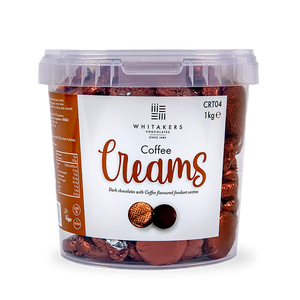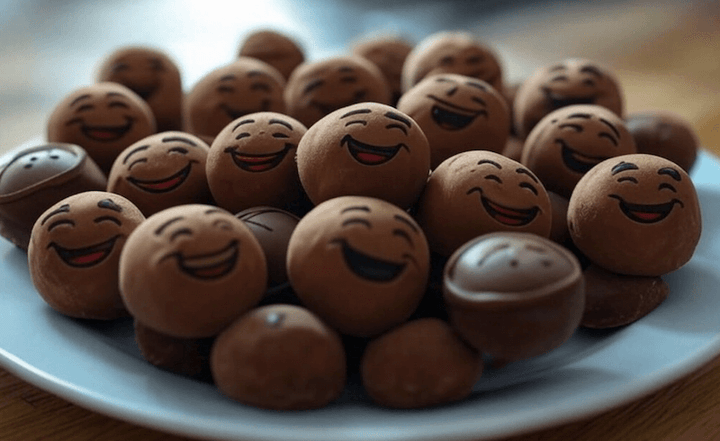Nonpareilles, a term intriguing and often unfamiliar to many, are a delightful culinary addition, much cherished in confectionery.
This engaging exploration delves into nonpareils' origins, composition, and applications.
What Are Nonpareils?
Nonpareils, in the context of culinary arts, are tiny, usually round sugar balls used as a decorative element in baking and confectionery.
The name, derived from French, translates to "without equal", hinting at their unique ability to enhance the visual appeal of various sweet treats.
They are often brightly coloured, and their size can range from tiny, almost like grains of sugar to slightly more prominent, bead-like forms.
Commonly used to decorate cakes, biscuits, ice cream, and chocolates, nonpareils add a splash of colour and a subtle textural contrast.
They are particularly popular for decorating festive confectioneries or unique occasion desserts, such as wedding cakes and Easter eggs.
In some culinary traditions, nonpareils may also refer to capers preserved in vinegar, but in the context of sweets and baking, they are invariably the tiny, colourful sugar decorations.
How Are Nonpareils Made?
The production typically involves the following steps:
-
Sugar Solution Preparation: The process begins with creating a sugar solution. This is usually a mixture of sugar and starch, with water added to achieve consistency.
-
Granulation: The sugar solution is then granulated. In this stage, the liquid is transformed into tiny, solid beads. This can be achieved through various methods, such as a spinning drum or a spray nozzle system. The size of the nonpareils is determined during this granulation process.
-
Drying and Hardening: Once the sugar beads are formed, they are dried and hardened. This is often done in large, rotating drums that ensure the beads are evenly dried without clumping together.
-
Colouring: The hardened sugar beads are then coloured. Food-grade dyes are used to give nonpareils their characteristic vibrant colours. This step can occur either during the sugar solution stage or after the beads have hardened.
-
Polishing: Finally, the nonpareils are polished to give them a shiny, attractive appearance. This is usually done with a food-grade wax or glaze, applied as the beads are tumbled in large drums.
-
Quality Control and Packaging: After the nonpareils are polished, they undergo quality control checks to ensure consistency in size, colour, and quality. They are then packaged and distributed for commercial use.
This highly efficient commercial process allows for the production of nonpareils in vast quantities, ensuring a consistent product in terms of size, colour, and quality, which is essential for their use in the confectionery industry.

What Are Chocolate Nonpareils?
Chocolate nonpareilles are a delightful confection that combines the smooth richness of chocolate with the crunchy texture of nonpareilles, the small, sugar-based decorative balls.
These treats typically consist of a disk-shaped base of milk, dark, or white chocolate sprinkled with a generous layer of nonpareils.
The result is a harmonious blend of creamy chocolate and the subtle crunch of sugar beads.
The chocolate base provides a versatile canvas for the nonpareils, allowing for various flavour combinations depending on the type of chocolate used.
Milk chocolate nonpareils offer a sweeter, creamier taste, while dark chocolate variants introduce a more intense, cocoa-rich experience. White chocolate nonpareils, on the other hand, provide a milder, buttery flavour profile.
Chocolate nonpareils are famous as a standalone snack, a decorative topping for cakes and cupcakes, or a festive treat during holidays and special occasions.
Their appealing look and the delightful contrast in textures make them a favourite among children and adults.
They are commonly found in confectionery shops and a popular choice for homemade baking projects, bringing a touch of elegance and fun to a wide range of desserts.
Ideas for Using Nonpareils in Home Baking?
Here are some creative ideas for incorporating them into your baking projects:
-
Cupcake Toppers: Sprinkle them on top of frosted cupcakes for an instant pop of colour and texture. They pair exceptionally well with buttercream or cream cheese frosting.
-
Cookie Embellishments: Roll the edges of cookie dough balls in nonpareils before baking. This creates a colourful border around each cookie, making them visually appealing and adding a crunchy texture.
-
Cake Decorations: Use nonpareils to create patterns or borders on cakes. They can be used to write messages, create shapes, or add a decorative edge around the base or top of a cake.
-
Chocolate Bark: Melt your favourite chocolate and spread it thinly on a baking sheet. Sprinkle a generous amount of nonpareils over the chocolate before it sets. Once cooled and hardened, break into pieces for a festive treat.
-
Doughnut Glaze: After glazing doughnuts, sprinkle them with nonpareilles. The sugar beads stick to the glaze, adding a fun and colourful touch.
-
Truffle Coating: Roll chocolate truffles or energy balls in nonpareils for a delightful contrast between the smooth centre and the crunchy exterior.
-
Homemade Ice Cream and Frozen Treats: Mix nonpareils into homemade ice cream before freezing, or sprinkle them on top of ice cream sundaes or frozen yoghurt for a fun burst of colour.
-
Holiday and Seasonal Baking: Use nonpareils in colours that match seasonal themes, like red and green for Christmas, pastels for Easter, or orange and black for Halloween, to add a festive touch to your baked goods.
-
Edible Craft Projects: They are perfect for fun baking projects with kids, like decorating gingerbread houses or making edible jewellery like bracelets and necklaces.
-
Fruit Dips: Dip fruit slices in chocolate or yoghurt and then in nonpareils for a quick, fun snack.
Remember, nonpareils are not just about adding colour; they also introduce an intriguing textural element to your baking, making them a versatile and enjoyable ingredient.
Where Do Nonpareils Come From?
Nonpareils have a rich history that dates back several centuries.
The term "nonpareil" means "without equal" in French, suggesting their original status as a high-quality, unmatched confection.
They originated in Europe, likely in France, as a decorative confection used in high-end cuisine.
In the 18th century, nonpareils were considered a luxury item in French cuisine, prized for their delicate and decorative appearance.
Initially, they were hand-made, which made them expensive and a symbol of culinary sophistication.
The process involved painstakingly creating each small, round sugar bead, which was then used to adorn cakes, pastries, and other desserts.
As confectionery techniques evolved, the production of nonpareils became more automated, allowing for broader availability and variety.
Despite this evolution, they have retained their name and continue to be a popular choice for adding a decorative touch to various desserts worldwide.
Where Can You Buy Scrummy Chocolate?
Whitakers Chocolates, renowned for our long history in crafting delicious and affordable chocolates, offers a range of options suitable for everyone, including vegetarian, vegan, and gluten-free choices.
Our top-selling products, such as indulgent Coffee Creams, Neapolitans, Chocolate Wafer Thins, Stem Ginger and Luxury Chocolate Truffles, are the perfect accompaniments to enhance your mocha coffee experience.
Some Notes From an Expert Chocolatier
As an expert chocolatier, I've always been fascinated by the remarkable versatility of chocolate as a medium.
One of the aspects I cherish most is its ability to harmonise with a multitude of additions, each bringing its unique character to the final creation.
Nonpareils, in particular, hold a special place in my chocolate repertoire.
Adding nonpareils to chocolate is not just about aesthetic enhancement, but they certainly add a visually striking element.
They introduce a textural contrast that is quite delightful.
The smooth, rich melt of chocolate combined with the subtle crunch of these tiny sugar beads creates a multi-sensory experience that elevates even the simplest of chocolate treats.
Furthermore, using nonpareils allows for a playful yet sophisticated approach to chocolate making.
Final Notes On Nonpareilles
Nonpareilles testify to the adage that great things often come in small packages.
These tiny, colourful sugar beads transcend their modest size, offering possibilities in the culinary realm, especially in confectionery and baking.
From the expert chocolatier's bench to the home baker's kitchen, nonpareils bring a unique blend of visual appeal, textural contrast, and playful creativity to various treats.
Their versatility in complementing different types of chocolates and baked goods and their ability to celebrate festive occasions and themes makes them a beloved ingredient.
Adding nonpareils can transform ordinary desserts into extraordinary, eye-catching creations that delight both the palate and the eye.





















